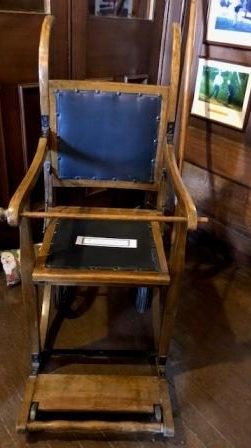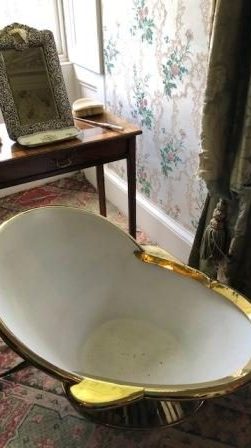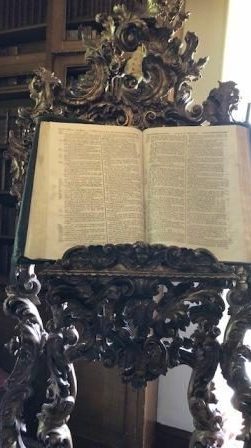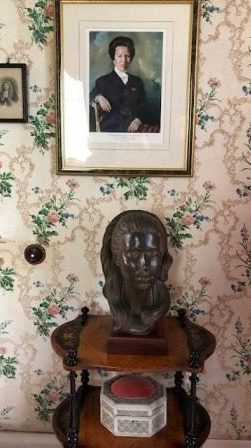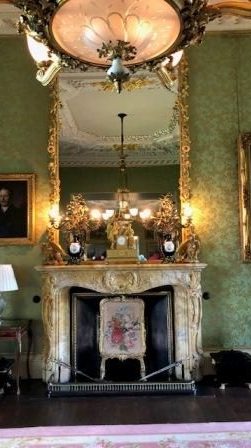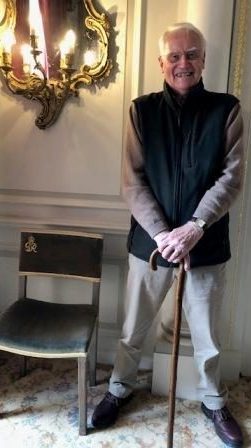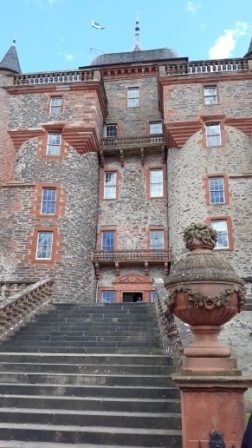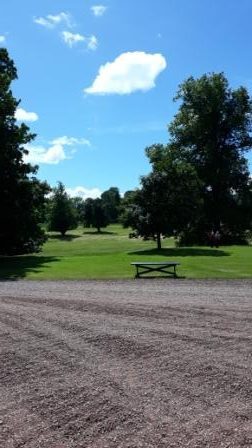Places
A Profusion Of Turrets
A visit to Thirlestane Castle- 6th June 2024
by Andreena MacDonald
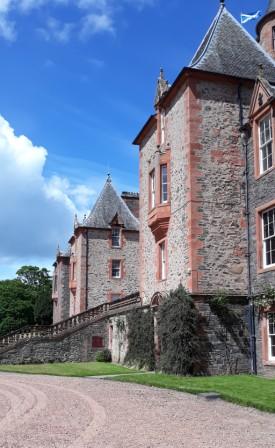
Our well disciplined members all arrived promptly at 9:45 at Leys Park Road Car Park. We boarded our exclusive executive coach on our leisurely journey to Lauderdale. I always enjoy a trip to the Borders, especially when someone else is driving. Our coach driver, Jim, certainly ensured that our time on the coach was comfortable and relaxing. The sun was shining, enhancing our view of the rolling verdant hills. The panorama of luxurious grassy mounds stretched for miles. The Scottish countryside was at its vibrant peak. Our first stop was at the Stair Arms Hotel in Pathhead, where we enjoyed deliciously fresh fruit and plain scones (straight from the oven) with butter, jam and cream, accompanied by tea and coffee. Suitably energised, we clambered back onto the coach, heading for our main destination, Thirlestane Castle.
The foundations for the present castle were dug in 1590. Originally built as a stone keep, it has been extended twice. In 1670, architect, Sir William Bruce transformed the keep into a ducal palace by adding two new towers, an imposing grand staircase and the outstanding intricate plasterwork and luxurious interior we can still admire today. In 1840 architects David Bryce and William Burn designed two new wings and raised the central tower to accommodate the Earl’s frequent guests and their servants.

Thirlestane Castle has been home to the Maitland family for 400 years. One wing is occupied today by Edward Maitland-Carew and his family. During World War One the castle was used as a military hospital, caring for convalescing officers. In World War Two it became a school for girls. Thirlestane castle first opened to the public in 1984. It is now a destination for weddings, exclusive hire and a variety of events including horse trials, classic car rallies and dog shows. Accommodation is available in exclusive apartments within the castle.
My first impression was of a mass of imposing pink sandstone towers, crowned by a profusion of assorted turrets. The opulent building appears as a majestic edifice, standing prominently in the lush green of the surrounding trees and grassland. We entered the hall (built in 1672) via the external staircase. On the wall was displayed a collection of weapons including one from the time when the Jacobites rested here in 1745. We saw the pink granite fire surround dated from the 1840s, a sedan chair used by the 14th Countess of Lauderdale and a wheelchair from World War One when the castle was used as a hospital. Celebrity visitors have included Bonnie Prince Charlie who stayed at Thirlestane for one night in 1745, Queen Elizabeth II and Princess Anne who attended horse trials here.
The thickness of the walls of the castle (between 6 and 8 feet) could be appreciated in the Panelled Room by the depth of the window recesses. My favourite room in all stately homes is the library. This one was packed from floor to ceiling with 2000 beautiful leather bound volumes. Surprisingly only one had been read. Borrowed during World War One by a recuperating soldier, it was missing for many years until returned by a visitor from Australia. I would have liked to spend longer here having a closer look at the titles. The Memoirs of Henry VIII promised to be an interesting read but we had much more to see.
The Billiard Room, now set up for snooker, has been in use since the 1840s. During World War Two when the castle was used as a girls school, safety was often sought under the billiard table. The Small Library was home to a magnificent ornate Italian lectern displaying a large family bible. A spiral staircase led to the Duke’s Dressing room with an imposing portrait of the Earl wearing the Robes of the Knights of the Garter. He was elevated to the English Peerage in 1672. Unfortunately, when the Duke died in 1682, his second wife Elizabeth packed up 14 wagons loaded with furniture from the castle to be sent to her family home in Richmond. We thought the floral wallpaper decorating the walls of this room was rather feminine but our guide, Malcolm, assured us this design was very popular in the 1870s. The wallpaper was well preserved but had a hidden secret- it contained arsenic!
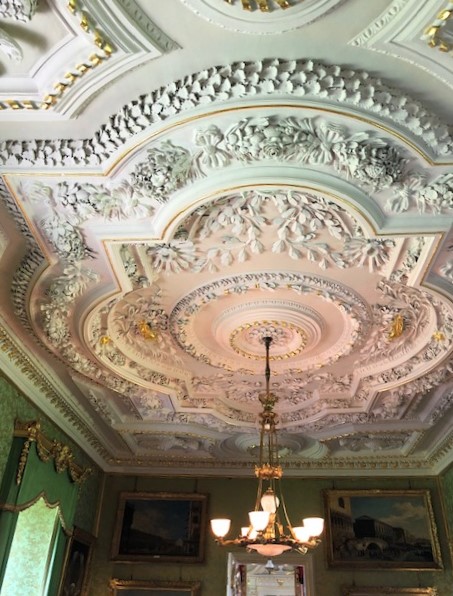
The magnificent Drawing Room was opened up in the 1670s at the time when the exceptional plasterwork ceilings were designed by Sir William Bruce. Over mantle mirrors allowed us to admire the magnificent ceiling plasterwork without straining our necks. Musical instruments decorate the ceiling at one end (used as a music room) while the other end is adorned with impressive eagles, wreaths, flowers and fruit. The chairs in the Ante Drawing Room, bearing the monogram GR, used in the coronation of George VI, were admired and claimed by our Honorary President George Robertson as his own! The nursery contained a variety of toys and dolls houses, bringing back fond childhood memories for many of us.
A stroll along the woodland paths in the grounds of the castle completed our memorable visit to Thirlestane Castle. Our final destination was Carfraemill Hotel where we enjoyed a first class afternoon tea. It gave me time to chat to our members and I thank them for contributing their highlights of the day to this report.
Our visit was a resounding success. Is it too early to suggest a venue for next year?
An Edwardian Day Out
In “The Auld Weavers’ Drive” Jean Barclay tells us how the elderly, former handloom weavers of Dunfermline were treated to an annual outing. Hundreds of men and women were taken by fleets of horse drawn carriages for visits to “big houses” around Fife.
This fascinating article gives us all sorts of insights into life and social attitudes one hundred years ago.
Aberdour Heritage Centre
The new Heritage Centre in Aberdour will be open from 1 pm to 2 pm on Wednesdays and from 1 pm to 3 pm on Saturdays throughout the Winter.
The Centre, situated in the Aberdour railway station buildings, opened in July this year and provides information on the many historic locations of interest in the village.
The Black and Blue Rows
In “Update on Dunfermline’s Coloured Rows“, Jean Barclay provides new evidence which appears to solve the problem of the location of the long demolished Blue Row. In the mid 19th Century the Red, Black and Blue Rows were a set of streets north of the Mill Dam, mostly inhabited by workers in the textile industry.
Dunfermline’s Prison
Did You Know..
..that for many years there was a prison in Dunfermline?
In “Prison – Whit Prison?” George Robertson writes the history of the prison which once stood in Leys Park Road.
